
Fundamentals
The concept of Genetic Strength, particularly when discussing textured hair, extends beyond simple biological definition. It speaks to the inherent fortitude and unique attributes passed down through ancestral lineages, influencing the very architecture of hair strands and their capacity for resilience. At its most elemental, genetic strength refers to the biological blueprint encoded within our DNA, dictating the fundamental characteristics of our hair.
This includes its curl pattern, thickness, density, and how readily it absorbs and retains moisture. These traits are not random; they are the result of countless generations adapting to diverse environments, with each curl and coil bearing a story of survival and cultural continuity.
For individuals with textured hair, especially those within Black and mixed-race communities, Genetic Strength carries a profound significance. It underscores the intrinsic robustness of hair that has, for centuries, been mischaracterized or deemed fragile by Eurocentric beauty standards. Understanding this inherent strength means recognizing the unique properties of highly coiled hair, such as its elliptical cross-section and the distribution of disulfide bonds, which contribute to its distinct structure.
Genetic Strength represents the deeply rooted, inherited resilience and unique structural attributes that define textured hair across generations.
This foundational comprehension invites a shift in perspective, moving away from notions of deficiency towards an appreciation of intrinsic vitality. It establishes that textured hair, with its unique biomechanical properties, is not inherently weak but possesses a different kind of strength, one that has supported cultural expression and identity through various historical contexts. Embracing this perspective helps to frame hair care as a process of nurturing and working in harmony with one’s biological inheritance, rather than attempting to alter its fundamental nature.
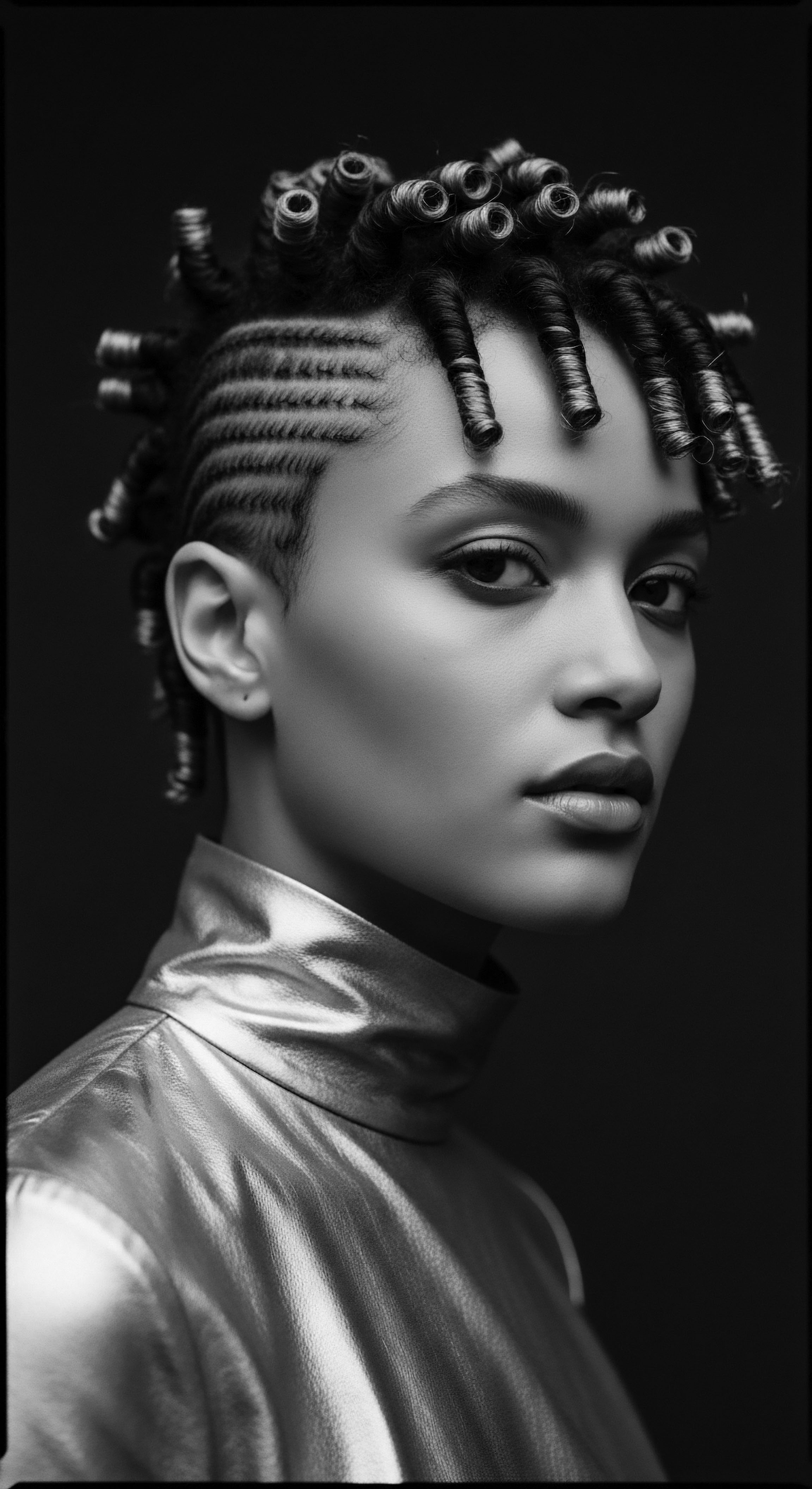
The Blueprint of the Strand
Hair is primarily composed of Keratin, a protein that forms the building blocks of each strand. The way these keratin proteins are arranged and cross-linked determines the hair’s shape, elasticity, and overall structural integrity. In textured hair, particularly Afro-textured types, the follicle itself is often elliptical or asymmetrical, which causes the hair shaft to grow in a spiral or helical pattern.
The distribution of Disulfide Bonds—the strongest chemical bonds in hair—also plays a part in its texture and inherent capabilities. Afro-textured hair often exhibits a higher density of these bonds, which contributes to its unique structure, even if the curvature makes it appear more prone to mechanical stress under certain conditions. The medulla, the innermost layer of the hair fiber, contributes to hair volume, strength, elasticity, and texture, being typically present in thicker hair types.

Early Ancestral Connections
From the earliest human ancestors, hair served more than a mere aesthetic purpose. It offered essential protection against intense ultraviolet (UV) radiation and aided in thermoregulation. The spiraled structure and wider follicular patterns of textured hair allowed for greater airflow to the scalp, acting as a natural ventilation system. This adaptation points to a deep, evolutionary connection between hair morphology and survival in challenging environments, marking textured hair as possibly the earliest hair type among modern humans.
Long before modern scientific inquiry, ancestral communities held a deep reverence for hair, recognizing its profound connection to identity, social standing, and spirituality. In ancient African civilizations, hairstyles communicated a person’s identity, societal role, and spiritual beliefs. Intricate braids and adornments were not merely decorative; they were expressions of power, spiritual connection, and social cohesion. These practices, passed down through generations, reveal an intuitive understanding of hair’s inherent qualities and its role in human experience.

Intermediate
Moving beyond the foundational aspects, the meaning of Genetic Strength in textured hair deepens, encompassing not only the biological predispositions but also the historical and communal wisdom that has safeguarded and celebrated these inherent qualities. It reflects the understanding that hair, particularly for Black and mixed-race individuals, is a living testament to heritage, adapting and thriving through centuries of cultural shifts and challenges. This interpretation of genetic strength acknowledges the unique physiological characteristics of textured hair alongside the ancestral care practices that have historically sustained its vitality.
The concept extends to the notion of Hair Porosity, a characteristic significantly influenced by genetics. Hair porosity describes how well hair absorbs and retains moisture, a critical factor for the health and appearance of textured strands. Afro-textured hair, due to its unique structure, tends to be naturally more porous than straighter hair types, making moisture retention a primary concern. This genetic predisposition means that traditional care routines, rich in moisturizing ingredients and protective styles, have been instinctively developed to address these specific needs.
Genetic Strength is a confluence of inherited biological traits and enduring ancestral practices, cultivating the resilience and unique characteristics of textured hair.
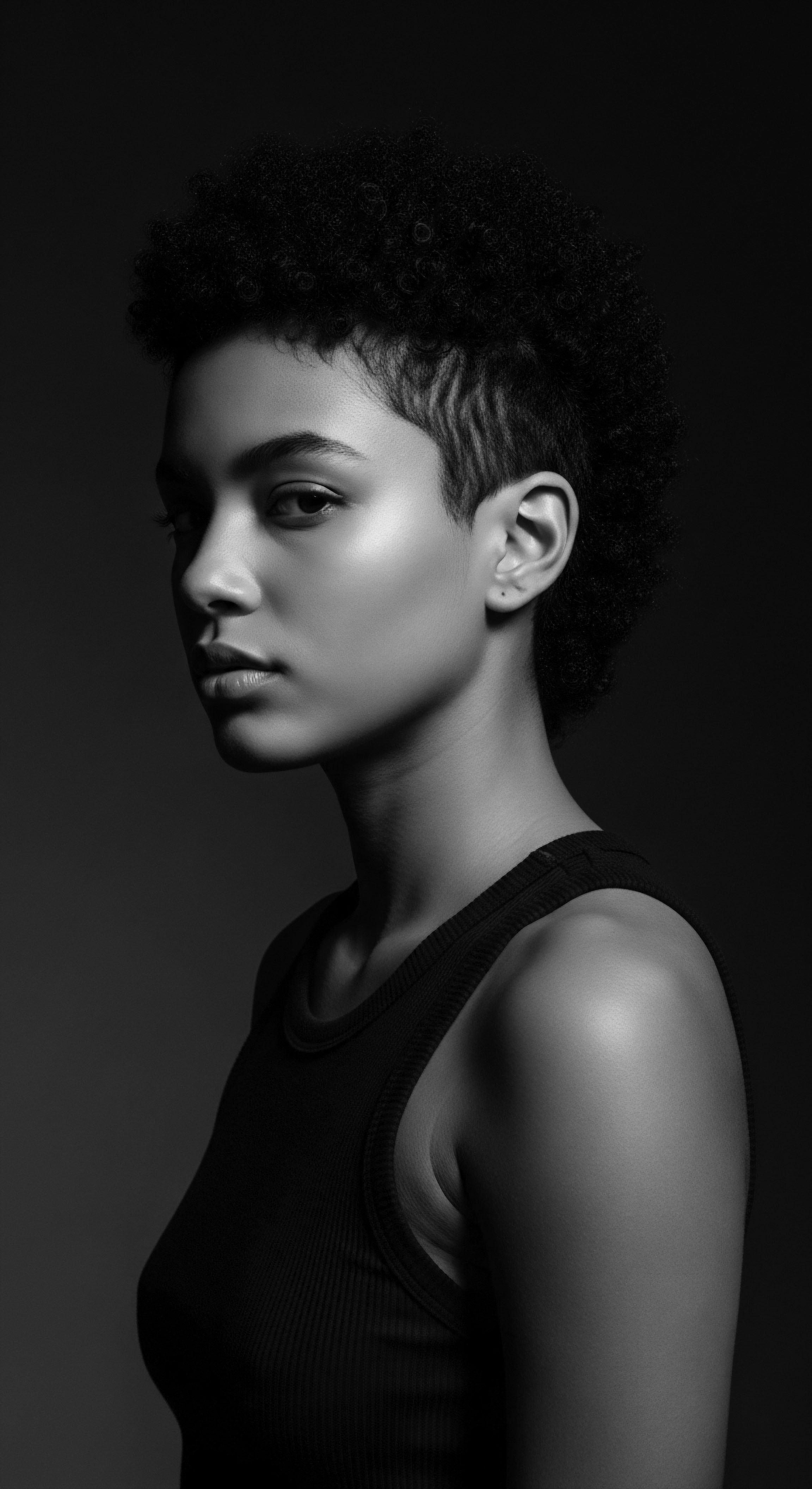
The Intricacies of Hair Porosity and Ancestral Solutions
Hair porosity, while fundamentally genetic, can also be influenced by external factors such as chemical treatments, heat styling, and environmental exposure. These elements can compromise the hair cuticle, leading to increased porosity and vulnerability to damage. Ancestral care practices, however, often provided natural countermeasures to these potential vulnerabilities, even before the scientific language existed to explain them.
- Low Porosity Hair ❉ This type has tightly reinforced cuticle layers, which makes it resistant to absorbing water and products. Hair takes a long time to wet and dry, and products may build up on the surface. Ancestral wisdom for this type might have focused on steaming or warm applications to encourage penetration of natural oils.
- High Porosity Hair ❉ The cuticle in this hair type has gaps, absorbing moisture easily but also losing it quickly, leading to frizz and dryness. This is common in textured hair due to its natural configuration or damage. Traditional methods often included sealing moisture with rich oils and butters, and employing protective styles to minimize exposure and loss.
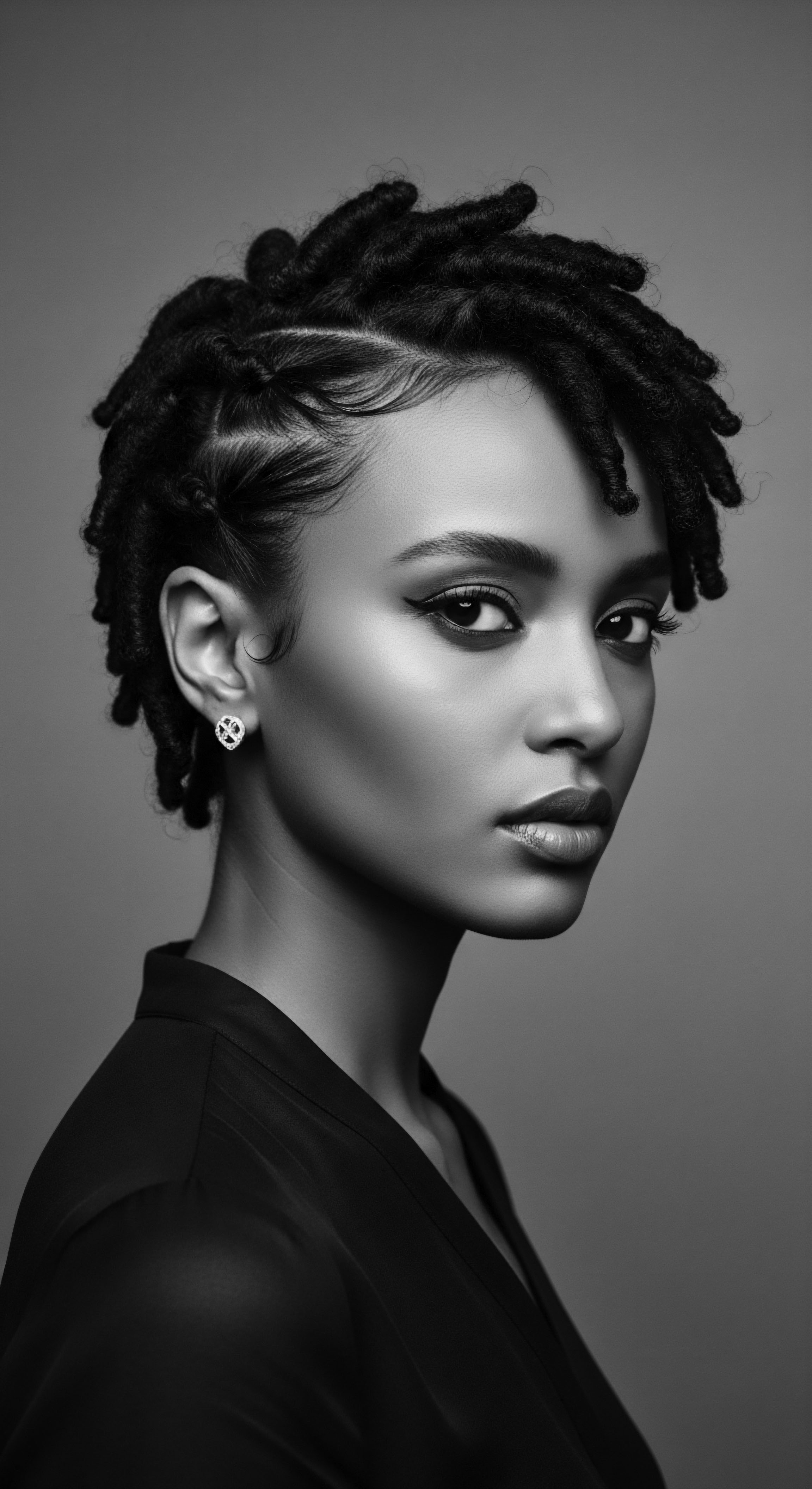
Traditional Practices and Their Scientific Resonance
Across the African continent and within the diaspora, hair care was a communal activity, a site for bonding, storytelling, and the transmission of generational knowledge. Techniques such as braiding, twisting, and adornment were not solely for aesthetics; they were ceremonial acts that preserved cultural memory and provided practical benefits for hair health. Many of these time-honored rituals find modern scientific validation, underscoring the intuitive genius of ancestral care.
| Traditional Practice/Ingredient Shea Butter (Vitellaria paradoxa) ❉ Used across West Africa for centuries to moisturize and protect hair. |
| Contemporary/Scientific Link to Genetic Strength Rich in fatty acids and vitamins A and E, providing emollients that seal the cuticle and reduce moisture loss, directly benefiting hair porosity. This aligns with the natural lipid content of Afro-textured hair. |
| Traditional Practice/Ingredient Coconut Oil (Cocos nucifera) ❉ Valued for deep conditioning and scalp health. |
| Contemporary/Scientific Link to Genetic Strength Its molecular structure allows for deeper penetration into the hair shaft compared to many other oils, helping to reduce protein loss and increase flexibility, thereby reinforcing the strand's inherent capabilities. |
| Traditional Practice/Ingredient Protective Hairstyles (Braids, Twists, Bantu Knots) ❉ Worn to safeguard hair from environmental damage and reduce daily manipulation. |
| Contemporary/Scientific Link to Genetic Strength Minimizes mechanical stress on fragile points of hair curvature, preserves moisture, and allows the hair to rest and grow, directly supporting hair shaft integrity and preventing breakage. |
| Traditional Practice/Ingredient Henna (Lawsonia inermis) ❉ Used historically for strengthening and conditioning hair. |
| Contemporary/Scientific Link to Genetic Strength The lawsone molecule in henna binds to keratin, coating the hair shaft and providing a protective layer that can increase the strand's perceived thickness and resilience, offering a form of natural reinforcement. |
| Traditional Practice/Ingredient The enduring wisdom of ancestral hair care continues to inform modern approaches, demonstrating a timeless understanding of textured hair's needs. |
The return to these traditional methods, often seen in the modern natural hair movement, is not simply a trend; it is a conscious reconnection to a lineage of resilience and self-affirmation. Social media platforms have become vital spaces for sharing and learning about these ancient practices, bridging geographical distances and fostering a global community rooted in shared hair heritage.

Academic
The academic understanding of Genetic Strength represents a comprehensive synthesis of biophysical properties, inherited predispositions, and the profound sociocultural narratives that shape the lived experience of textured hair. It transcends a mere anatomical description, delving into the intricate molecular architecture of the hair fiber, the genomic factors dictating its formation, and the historical pressures that have simultaneously challenged and affirmed its inherent capabilities. At this elevated level of comprehension, Genetic Strength is defined as the deeply conserved adaptive capacities and structural peculiarities of hair, particularly Afro-textured hair, encoded within the genome and continually expressed through a dynamic interplay with environmental factors and culturally informed care practices. This meaning reflects a biological endowment that provides for unique characteristics, such as an increased density of disulfide bonds and an elliptical follicle shape, conferring a distinct set of physical properties to the hair strand that have supported human survival and cultural expression for millennia.
The scientific elucidation of hair’s genetic underpinnings reveals a complex mosaic of genes influencing hair fiber shape, keratinization, and follicle development. Genome-wide association studies (GWASs) have pinpointed specific gene loci, such as variations within the Trichohyalin (TCHH) gene, which are associated with hair curl and morphology, particularly in populations of Northern European ancestry. While these studies primarily focus on variations in curl patterns across diverse ethnic groups, they underscore the intricate genetic control over hair characteristics globally. The precise mechanisms by which these genes translate into the distinct biomechanical characteristics of Afro-textured hair — its high curvature, elliptical cross-section, and predisposition to weakness under mechanical extension — represent an ongoing area of scientific inquiry.

Bio-Architectural Resonances of Ancestry
The morphological distinctions of Afro-textured hair, such as its helical coiling and the varying diameters along its elliptical cross-section, introduce inherent points of mechanical vulnerability when subjected to tensile stress. Despite this, Afro-textured hair exhibits a higher overall lipid content compared to European and Asian hair, with studies indicating quantities 2.5 to 3.2 times greater. This high lipid content, predominantly from sebaceous lipids, contributes to the hair’s intrinsic protective mechanisms. Yet, paradoxically, Afro-textured hair is often characterized as dry, a phenomenon attributed to the structural challenges of sebum traveling down highly curved strands, leading to inadequate lubrication and moisture distribution.
The concept of Genetic Strength here becomes more than simple tensile resilience; it encompasses the hair’s capacity for architectural integrity despite structural complexities, its intrinsic lipid-rich composition, and the adaptive responses developed within ancestral care traditions. These traditions, born from necessity and observation, reflect an embodied scientific understanding that predates formal Western scientific method. For instance, the widespread use of oils like shea butter and coconut oil in African and diasporic communities for millennia was an intuitive application of emollients that compensated for the structural challenges of natural oil distribution.
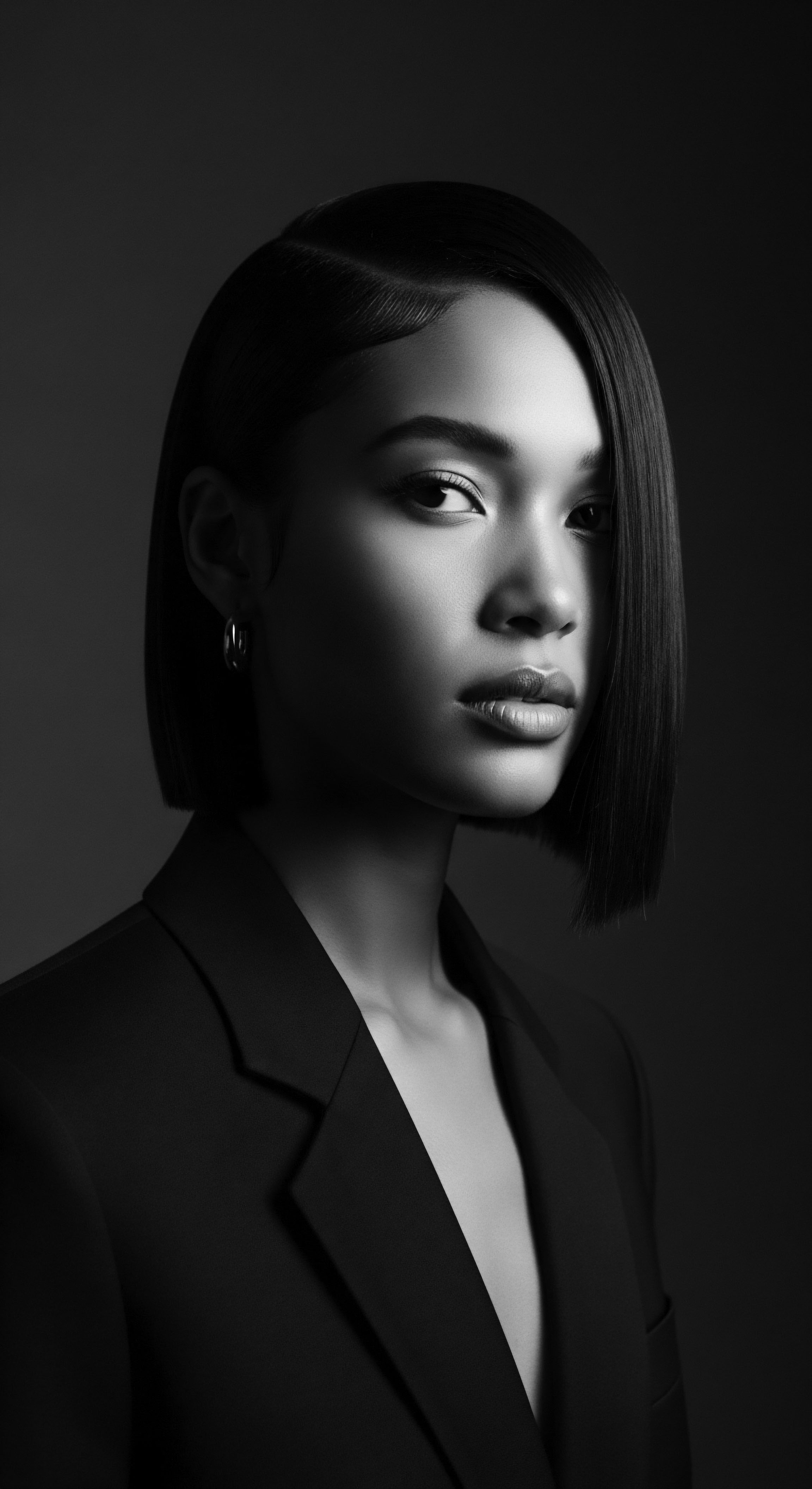
A Case Study in Adaptive Strength ❉ The Kongo & Yamoussoukro Traditions
To truly grasp the comprehensive meaning of Genetic Strength, it becomes imperative to consider specific historical instances where traditional practices directly countered and compensated for the unique biomechanical properties of textured hair, thereby affirming its inherent capabilities. A powerful instance unfolds in the history of hair care within the Kongo Kingdom (spanning parts of modern-day Angola, Democratic Republic of Congo, and Republic of Congo) and later in communities influenced by its diaspora. During periods of profound environmental change, like shifting climatic zones or resource scarcity, the resilience of hair was not merely a matter of biological inheritance but a testament to sophisticated ancestral knowledge systems. In these traditions, particularly those centered around the sacred use of specific indigenous botanical resources, the concept of hair fortification was interwoven with spiritual protection and communal health.
For example, in many central African cosmologies, including those of the Kongo people, the head was viewed as a spiritual portal, and hair as an antenna connecting individuals to the divine and ancestral realms. Care practices were thus ritualized, with a deep understanding of botanical properties. One less commonly cited but compelling example involves the utilization of the Baobab Tree (Adansonia Digitata). While much has been written about its nutritional and medicinal uses, its application in hair care within specific Kongo and later, West African diasporic communities (such as those in parts of Brazil and the Caribbean where Kongo influences were strong), illuminates a direct connection to genetic hair strength.
Baobab oil and powdered pulp, rich in omega fatty acids, vitamins (especially C and B), and minerals, were historically massaged into the scalp and hair. Its highly viscous nature and nutrient profile provided intense moisture and a protective barrier, countering the natural moisture evaporation characteristic of highly porous, coiled hair. This practice, often accompanied by communal grooming sessions and ritualistic chants, demonstrably improved the tensile properties of the hair strands, reducing breakage and enhancing elasticity. This was not a random act; it was a deliberate, generational response to the hair’s inherent characteristics, affirming its capacity for vitality.
The use of baobab in Kongo hair traditions illustrates how ancestral ingenuity fostered hair vitality, transforming biological predispositions into enduring strengths through ritualized care.
A quantifiable aspect supporting this historical application ❉ Research on baobab seed oil confirms its high content of linoleic acid (Omega-6) and alpha-linolenic acid (Omega-3), both essential fatty acids that contribute to epidermal barrier function and skin (and by extension, scalp) health, which directly influences hair quality. A study by Komane Et Al. (2017) published in the Journal of Ethnopharmacology, while broader in scope, highlighted the traditional use of Adansonia digitata across African communities for various dermatological conditions, indirectly supporting its long-standing recognition for hair and scalp nourishment within indigenous knowledge systems (Komane, B. N.
et al. (2017). Journal of Ethnopharmacology, 201, 164-182). This substantiates the efficacy of ancestral practices that intuitively leveraged the biomechanical advantages of indigenous botanicals to supplement the genetically inherent traits of textured hair, promoting strength and resilience against environmental stressors and styling demands. This practice ensured that despite the hair’s natural propensity for dryness and fragility due to its coiled structure, it was nurtured to retain its natural vigor.
This deep dive into baobab’s historical use in Kongo-influenced hair care is a powerful example of how what we term “Genetic Strength” is not a static biological attribute, but a dynamic potential actualized and sustained through continuous, culturally informed engagement. It reveals that the meaning of Genetic Strength is profoundly intertwined with the active cultivation of hair health within a heritage context, often through botanical wisdom.

The Sociopolitical Dimensions of Genetic Strength
Beyond the biophysical, the concept of Genetic Strength is inescapably intertwined with historical and sociopolitical landscapes. The systemic oppression during slavery, which included forced head shaving, sought to strip enslaved Africans of their identity and cultural connection through hair. Yet, in a profound act of resistance, ancestral hair traditions persisted, often adapted into intricate patterns that served as coded messages or maps for escape, demonstrating a resilience that transcended physical subjugation.
The “good hair/bad hair” dichotomy, born from Eurocentric beauty standards, enforced a narrative that dismissed the intrinsic qualities of Afro-textured hair, pushing for chemical straightening and assimilation. The subsequent natural hair movements of the 1960s (aligned with the Black Power movement) and the contemporary era represent a powerful reclamation of Genetic Strength as a symbol of Black identity, pride, and resistance. These movements affirm that the inherent nature of textured hair carries not only biological fortitude but also a profound sociocultural and political potency.
The continued fight against hair discrimination, epitomized by initiatives like the CROWN Act, highlights the ongoing struggle to protect the right of individuals to express their Genetic Strength through their natural hair in professional and educational settings. This legislative recognition underscores that hair, in its natural state, is a protected aspect of identity and heritage, further cementing the expanded academic understanding of Genetic Strength.
A deeper analysis of this meaning indicates that understanding Genetic Strength in textured hair requires a multidisciplinary lens. It necessitates an examination of:
- Hair Follicle Morphology and Growth Dynamics ❉ The unique asymmetry and curvature of Afro-textured hair follicles that influence strand shape and growth patterns, contributing to its distinct mechanical properties.
- Keratin Composition and Cross-Linking ❉ The specific arrangements and higher density of disulfide bonds within keratin proteins that impart unique structural integrity to textured hair, balancing strength with a predisposition to certain forms of breakage.
- Hair Lipidomics and Moisture Homeostasis ❉ The intrinsic lipid content and the challenges of moisture distribution along highly coiled strands, emphasizing the physiological basis for traditional moisturizing practices.
- Ethnobotanical Pharmacology ❉ The scientific validation of indigenous plant-based treatments, demonstrating how ancestral knowledge intuitively addressed the biological needs of textured hair.
- Socio-Historical and Anthropological Contexts ❉ The role of hair as a cultural marker, a tool for resistance, and a focal point for identity in the face of systemic oppression, revealing the profound impact of collective experience on the perception and care of inherited traits.
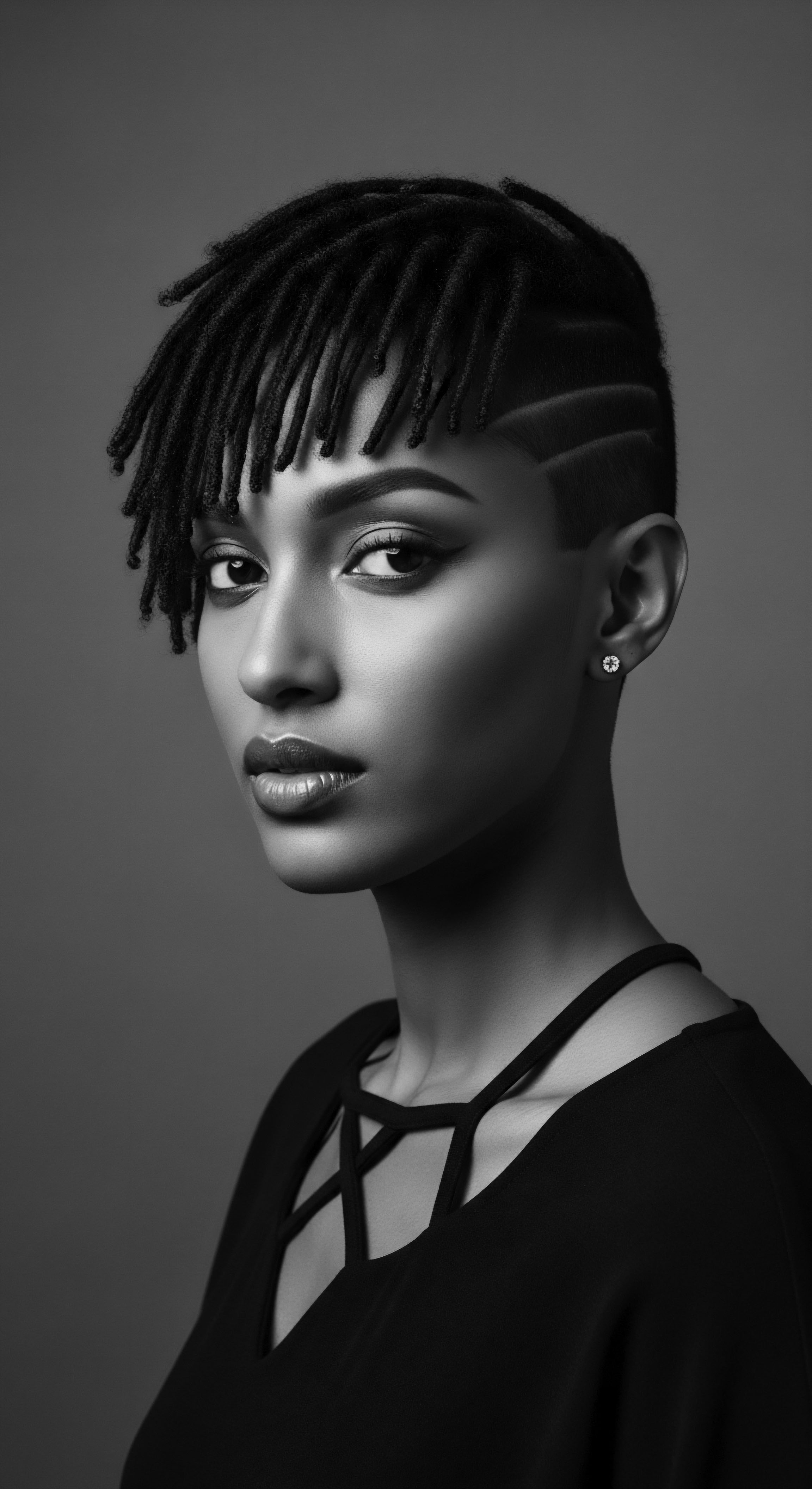
Reflection on the Heritage of Genetic Strength
As we draw our thoughts together, the journey through the meaning of Genetic Strength in textured hair unveils itself as more than a scientific inquiry. It is a profound meditation on memory, resilience, and the enduring spirit of human connection. From the whisper of ancient winds carrying seeds of ancestral wisdom to the vibrant expressions of identity today, the narrative of textured hair is one of unbroken lineage.
We come to appreciate that the very coils and kinks of textured hair are not simply biological accidents. Instead, they are deeply rooted expressions of a sophisticated biological heritage, forged in ancient landscapes, refined by generations of intentional care, and carried forward with an unwavering sense of self.
This understanding invites a thoughtful pause, allowing us to consider how the past continually informs the present. The hands that once braided rice seeds into hair for survival, the voices that shared stories during communal grooming sessions, and the spirits that found connection to the divine through meticulously styled crowns—all contribute to the living archive of Genetic Strength. It is a strength that is both internal, residing within the very genetic code, and external, manifested through the practices and communal bonds that nurture and honor it. When we tend to our textured hair with reverence, we are not merely engaging in a beauty routine.
We are participating in an ancient ritual, reinforcing the delicate yet robust thread that links us to those who came before. We are affirming a legacy of profound ingenuity, adaptability, and unwavering cultural pride.
The enduring heritage of textured hair reminds us that Genetic Strength is not a static inheritance but a living, evolving narrative of ancestral wisdom and contemporary vitality.
The contemporary celebration of natural textured hair, often seen as a political statement in modern society, is in fact a return to a fundamental truth ❉ that our hair, in its natural state, is magnificent. This acknowledgement of Genetic Strength encourages a shift from external validation to internal knowing, recognizing that the beauty and resilience of textured hair are inherently theirs, an ancestral gift awaiting our respectful stewardship. Each strand carries the echoes of a rich past, signaling a vibrant present, and pointing towards a future where this inherent strength is universally celebrated, understood, and cherished.

References
- Byrd, A. D. & Tharps, L. L. (2014). Hair Story ❉ Untangling the Roots of Black Hair in America. St. Martin’s Griffin.
- Komane, B. N. et al. (2017). Ethnobotanical survey of medicinal plants used in the treatment of dermatological conditions in the Amathole District, Eastern Cape, South Africa. Journal of Ethnopharmacology, 201, 164-182.
- Loussouarn, G. (2001). Hair shape, a racial character. Human Biology, 73(5), 653-662.
- Porter, L. M. (2007). The Hair, the Head, and the Black Woman ❉ An Examination of the Politics of Black Women’s Hair. New York University.
- Roberson, A. (2018). Hair Politics ❉ An Exploration of Natural Hair and Black Female Identity. University of Tennessee.
- Rogers, K. M. (2016). The Science of Hair. Elsevier.
- Sivasothy, A. D. (2011). The Science of Black Hair ❉ A Comprehensive Guide to Textured Hair Care. Sista Sense.
- Tobin, C. (2004). The biology of the hair follicle. Current Problems in Dermatology, 32, 1-13.
- Verdier, M. (2015). Hair ❉ A Cultural History of Human Hair. Reaktion Books.
- West, C. L. (2009). Hair Story ❉ Untangling the Cultural Roots of Black Hair. The Journal of American Culture, 32(3), 263-264.
